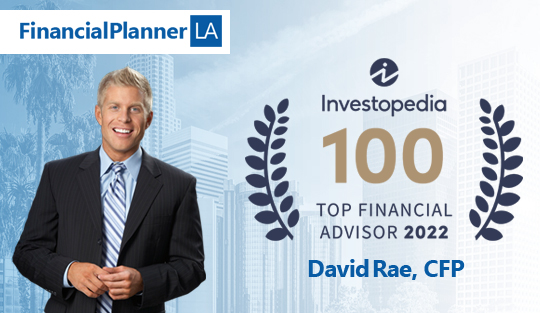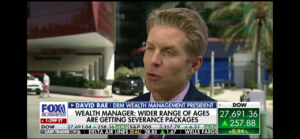

The Rich Person Pension (aka Cash Balance Plan) is really for high-earning self-employed business owners who need to supercharge their tax planning and retirement planning. While these amazingly valuable pension plans skew toward the wealthiest among us, they do also provide benefits for the more rank-and-file workers who are lucky enough to have one of these plans from their high-income employers. With a Rich Person Pension, a business owner can help shelter hundreds of thousands of dollars of income from income taxes today.
Update: The Contribution Limits For Cash Balance Pension Plans will be increasing in 2023. Talk with your tax planning financial advisor about how much you can contribute pre-tax to the Rich Person Pension.
Just to be clear, this is not the same pension plan your grandparents had to fund their retirement. Workers from their generation worked for one employer for 40 years, invested little to nothing themselves but received a lifetime of income once they retired. That is a thing of the past. The Cash Balance Plan (aka Rich Persons Pension) is a way for business owners (and the self-employed) to minimize their current taxes while supercharging their retirement accounts.
While the reported death of the traditional pension plan for the average American worker is still true, there is one area of the pension market that is currently red hot: pensions for rich professionals and business owners. With some proactive tax planning, wealthy business owners can stash away hundreds of thousands of dollars each year, pre-tax, into pension plans. This can help lower tax bills from tens of thousands of dollars on the low end to hundreds of thousands of dollars on the high end, each year. Hence the name Rich Person Pension, also commonly referred to as a Defined Benefit Plan or Cash Balance Pension Plan.
For business owners in the highest tax brackets living in places like Los Angeles and Palm Springs, the Rich Person pension could lower your taxes by a million dollars (or more) over the next decade.

The Basic of Pensions for Wealthy Professionals: What I Often Call the Rich Person Pension
We are talking about setting up a personal pension plan for people like doctors, lawyers, small business owners and anyone else with substantial self-employment income. More commonly referred to as a Defined Benefit Pension Plan or Cash Balance Pension Plan, this type of retirement plan typically will be combined with a 401(k) profit-sharing plan to maximize the allowable contributions each year. The reality is you have to be making a pretty good income to need or want to save beyond the allowed maximum of $61,000, per year, into a 401(k) (this is the total as the employee and employer in 2022). For those looking to save more, stashing hundreds of thousands of dollars per year into a pension can really lower current tax bills.
To get the most benefit from Rich Person Pension, you need you don’t need to private jet rich. This is more for the plain of 1-3 percenters. For those with high incomes and relatively small retirement accounts, a Cash Balance Rich Person Pension can be a great way to play catch up for retirement. It can also be a great estate planning tool for Ultra High Net Worth people who can employ other family members in their business.
While these private pension plans have been around for years, they have grown in popularity under the Trump Tax Plan, which went into effect for the tax year 2018. Large contribution limits to pension plans help wealthy business owners get around the annoying income limits Congress created on pass-through businesses. Firms/Businesses/Professionals making more than $340,100 (married) or $170,050 (single) in 2022 will see their 20% Qualified Business Income Deduction (QBI), aka pass-through deduction, limited or even eliminated.
Contributions to a pension plan lower the overall profits of a business. That results in a lower taxable income for the business, which allows the business owner to keep more money. It may also translate into a large QBI deduction. Hence, the surge – at least among business owners that I advise- of people looking to set up personal pension plans. Still, many people are unaware that this type of plan is available to them. Similarly, not that many people are able, or willing, to commit to investing several hundred thousand dollars, per year, for retirement. Tax savings be damned. For those who are able and willing, the tax savings are huge. Would you rather write a check to the IRS or your own retirement account?
Rich Person Pension Deadlines and Contributions Limits
Defined-benefit plans are often set up during the last few months of the year. That allows for an in-depth analysis of how much a business owner can contribute and what that will mean for the owner’s overall tax liability. Plans must be set up before year-end, so be aware of the coming holidays. It can take several weeks to complete a plan design, so do not procrastinate until the last minute.
The good news is these tax savings retirement plans don’t need to be funded until you file your taxes the following year. So, if you are just reading this now, near the end of 2022, and realize you could benefit from putting a few hundred thousand dollars into a pension plan but don’t have the money handy, you have some time to come up with the full amount.
Keep in mind; you will generally need to also make contributions for your employees if you have them. Each participant will know, each year, how much they hold in the plan individually. As the employer, you will make retirement contributions according to a pre-set formula and manage all participants’ investment portfolios collectively, usually with the help of a fiduciary financial advisor. You should be spending your time running your business, not dealing with financial planning or tax planning.
Pension plans should be designed for the specific make-up of your business. That considers the number of employees, their salaries, as well as their ages. Contribution limits are often based heavily on age as formulas are attempting to give a “defined benefit” in the future.
Younger, high-earning employees will be able to sock away less money into this type of plan. That amount will most likely be somewhere in the neighborhood of $100,000. That number increases to potentially more than $200,000 for those in their 50s and to potentially more than $300,000 for those who are 60 and older.
The biggest surge in new pension plans is coming from thousands of small businesses across the country. Those business owners have been riding the wave of economic recovery and are seeking more tax-efficient ways to save more of their hard-earned money. Fewer employees often allow more of the money to flow to the business owner or owners. In many cases, 85-96% of the benefit goes to the owner. At the same time, it can also be a valuable employee benefit and retention tool. Not many of your competitors will be offering their employees a pension plan.

Cash Balance Pension Plans as a Tax Killer
It’s expected that the surge of defined benefits pension plans of the past few years will continue as people become more aware of changes to taxation under the TCJA. Most people hate paying taxes. You’d be crazy not to see if this type of plan could save you a bundle come tax time.
On the flip side, big corporate pensions have been dying off and replaced by the cheaper 401(k) plans. For business owners already maxing out their 401(k) profit-sharing plans, looking at a cash balance pension plan is the obvious next step. That should be the case for professionals who know about the Rich Person Pension.
For example, a 60-something professional earning $700,000 a year could set up a cash balance pension plan in order to try and get his income below the $315,000 QBI threshold. He could put around $270,000 into his pension plan on top of the contribution limit of $64,500 to his 401(k) profit-sharing plan, which included the $6,500 catch-up contribution. Throw in a few other business expense tax deductions, and all of a sudden, that person’s effective tax rate drops below 20 percent. Your specific savings will vary from this hypothetical.
After several years of big contributions to a defined benefit plan, owners often roll their accounts into an IRA. Older workers may do that around retirement, whereas younger workers could set up a new pension and start the process again. Moving to an IRA is ideal because it is less costly than maintaining a pension plan. Also, you can typically invest more aggressively on your own than would be prudent within the pension plan. Taxes aren’t due until money is withdrawn from the pension or IRA. Ideally, withdrawals would be made in retirement when you are in a lower, often much lower, tax bracket.
Contributing For Your Employees Via Cash Balance Plan
Don’t worry. Pension plans don’t just benefit the rich by slashing their tax bills. Company employees also get some great benefits. Like most retirement plans, defined benefit pension plans are subject to regulations that must be followed carefully. Most importantly for this conversation are the non-discrimination rules, which require business owners to spread at least a small amount of their contributions to their employees.
The exact numbers will depend on the age and income levels of the employees. While setting up a cash balance plan for a business, it’s common to require a profit-sharing of around 7.5% of the underlying salaries of its workers. That may prove too costly for some businesses. On the other hand, I’ve found many owners in the financial position to make such a contribution who are more than happy to do so.
For the vast majority of those businesses, a wide majority of the benefits are going to the business owners. I’m setting up three plans this week, and between 86 and 92 percent of the benefits are going toward the owners. Not too shabby. Those numbers will increase if employees don’t stay long enough to fully vest in the plan. Unvested contributions will be redistributed into the plan and will generally benefit the owners of the business again.
The benefits to high-earning professionals can be huge with a defined benefit pension plan. However, that doesn’t mean it’s the perfect tax-minimizing strategy for every business owner. There are commitments and costs involved with setting up and maintaining those types of plans. The best candidates will have stable and consistent profits. Also, you don’t have to actually come up with the money to contribute right away. Be aware that you need to manage cash flow in order to have several hundred thousand dollars lying around when it comes time to contribute.
Cash Balance Plans Rarely Turned into Lifetime Income
Maintaining a cash balance pension plan costs money and time. Owners will want to make sure that the tax savings outweigh the cost and hassle. It could cost several thousands of dollars to set up and maintain a defined benefit plan. Costs are tax-deductible and will vary depending on the size of the plan (number of employees) and assets in the plan. Also, costs will vary from plan administrator to administrator. I’m all for saving money, but this isn’t a place you want to go to the lowest-cost provider who doesn’t really know what he or she is doing. A bad plan design or not following Employee Retirement Income Security Act of 1974 (ERISA) guidelines could mean lower contribution limits or, worse, fines.
Many workers dream of having retirement income guaranteed for life. The typical pension would be turned into an income stream, which would last the rest of their lives. While cash balance plans offer this type of lifetime income, very few business owners and their employees end up using the money that way.
The annuity or lifetime income option of a cash balance plan is often more appealing to the typical lower-income worker. That being said, most don’t work long enough for the same employer in order to accrue substantial benefits from their portions of a cash balance plan. Don’t get me wrong. It’s a sizable benefit, but if you only work somewhere for a few years, it won’t translate into a large monthly income benefit.
For business owners, there is often less desire to tie up the money into an annuity or lifetime income stream. Better options are often available on the open market, as opposed to the options provided within the plan. Turning the pension into lifetime income also eliminates some of the future tax planning opportunities, which could lead to higher taxes being paid on withdrawals.
For the most successful business owners, the typical 401(k) will leave them paying way too much in taxes. We’ve had a wave of success helping our highest-earning clients structure cash balance pension plans specifically for their personal financial goals and business needs. Talk with your trusted fiduciary Certified Financial Planner and CPA to see how much a defined benefit pension plan may be able to save you in taxes each year. It may take a little extra effort, but the potential tax savings make it more than worth it.
These plans are not right for everyone. Make sure to weigh the pros and cons. That being said, they could be a great way to stay on track for financial freedom if you find yourself getting walloped by staggering federal income tax bills or needing to play catch up for retirement. Feel free to reach out and see what else you could be doing to keep more of your hard-earned money.
How much would you save in taxes with the Rich Person’s Pension? Or the Rich Person Roth IRA?
Related: The Marriage Penalty Can Hit Gay Married Couples Hard. Keep Reading for Gay Tax Planning Tips.

DAVID RAE, CFP®, AIF® is a Los Angeles-based retirement planner with DRM WEALTH MANAGEMENT. He has been helping friends of the LGBT community reach their financial goals for over a decade. He is a regular contributor to Forbes.com, the Advocate Magazine Investopedia and Huffington Post as well as the author of the Financial Planner Los Angeles Blog. Investopedia name David Rae one of the “100 Top Financial Advisors” in 2022 for the sixth year in a row. Follow him on Facebook, or via his website www.davidraefp.com










[…] heard of a Cash Balance Defined Benefit Pension Plan? (you may even hear it referred to as the Rich Person Pension) You aren’t alone. Many financial advisor aren’t allowed to set these plans up or […]
[…] successful businesses are also adding a Cash Balance Pension Plan to the mix. This is one of the ways I can add the maximum value to my business-owner clients. Several of my […]
[…] adding a Defined Benefits Pension plan for potentially even more tax deferral. I just set up a Defined Benefit Pension plan for a new client. He was able to contribute an additional $200,000 (plu) on top of his solo 401k […]
[…] Extra Credit: If you are self-employed and make over $280,000 you should check out the Rich Person Pension. […]
[…] a secure retirement. Maximum contributions to the small business retirement plan combination of a 401(k) plus Cash Balance Plan could easily approach $300,000 per year or more if both spouses work in the […]
[…] a secure retirement. Maximum contributions to the small business retirement plan combination of a 401(k) plus Cash Balance Plan could easily approach $300,000 per year or more if both spouses work in the […]
[…] a secure retirement. Maximum contributions to the small business retirement plan combination of a 401(k) plus Cash Balance Plan could easily approach $300,000 per year or more if both spouses work in the […]
[…] a secure retirement. Maximum contributions to the small business retirement plan combination of a 401(k) plus Cash Balance Plan could easily approach $300,000 per year or more if both spouses work in the […]
[…] a secure retirement. Maximum contributions to the small business retirement plan combination of a 401(k) plus Cash Balance Plan could easily approach $300,000 per year or more if both spouses work in the […]
[…] a safe retirement. Most contributions to the little enterprise retirement strategy combination of a 401(k) as well as Income Stability Approach could conveniently approach $300,000 for every year or extra if equally spouses operate in the […]
[…] plan for a safe retirement. Most contributions to the small enterprise retirement plan mixture of a 401(k) plus Cash Balance Plan could easily approach $300,000 per year or extra if each spouses work within the […]
[…] plan for a safe retirement. Most contributions to the small enterprise retirement plan mixture of a 401(k) plus Cash Balance Plan could easily approach $300,000 per year or extra if each spouses work within the […]
[…] a secure retirement. Maximum contributions to the small business retirement plan combination of a 401(k) plus Cash Balance Plan could easily approach $300,000 per year or more if both spouses work in the […]
[…] making $280,000 or more should look at combining a 401(k) plan with a cash balance pension plan. This could allow you to shelter hundreds of thousands of dollars from taxation […]
[…] Good news for high-income business owners, one of the best tax-saving retirement plans, the Cash Balance Pension Plan, will have higher contribution limits in […]
[…] Good news for high-income business owners, one of the best tax-saving retirement plans, the Cash Balance Pension Plan, will have higher contribution limits in […]
[…] Good news for high-income business owners, one of the best tax-saving retirement plans, the Cash Balance Pension Plan, will have higher contribution limits in […]
[…] Good news for high-income business owners, one of the best tax-saving retirement plans, the Cash Balance Pension Plan, will have higher contribution limits in […]
[…] Good news for high-income business owners, one of the best tax-saving retirement plans, the Cash Balance Pension Plan, will have higher contribution limits in […]
[…] Good news for high-income business owners, one of the best tax-saving retirement plans, the Cash Balance Pension Plan, will have higher contribution limits in […]
[…] Good news for high-income business owners, one of the best tax-saving retirement plans, the Cash Balance Pension Plan, will have higher contribution limits in […]
[…] Good news for high-income business owners, one of the best tax-saving retirement plans, the Cash Balance Pension Plan, will have higher contribution limits in […]
[…] taxable income. This will help you to maximize the benefits of the 20% QBI tax deductions. As a financial planner working with many business owners, some of these tax-saving options can help you reach your long-term financial goals faster and […]
[…] taxable income. This will help you to maximize the benefits of the 20% QBI tax deductions. As a financial planner working with many business owners, some of these tax-saving options can help you reach your long-term financial goals faster and […]